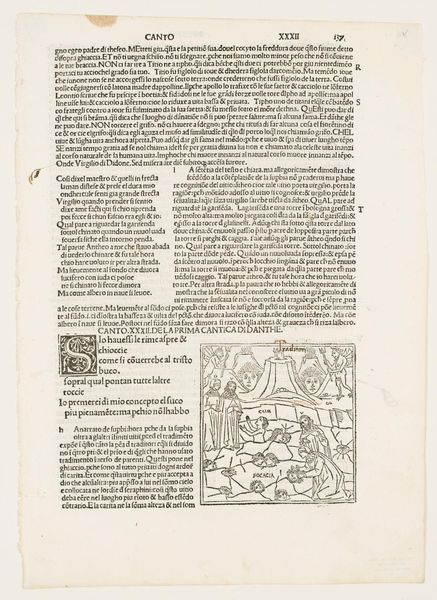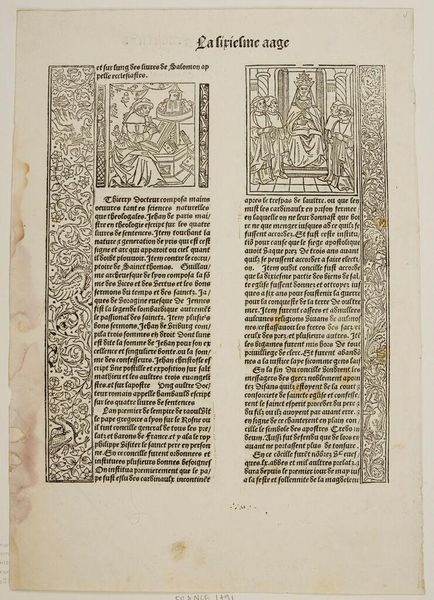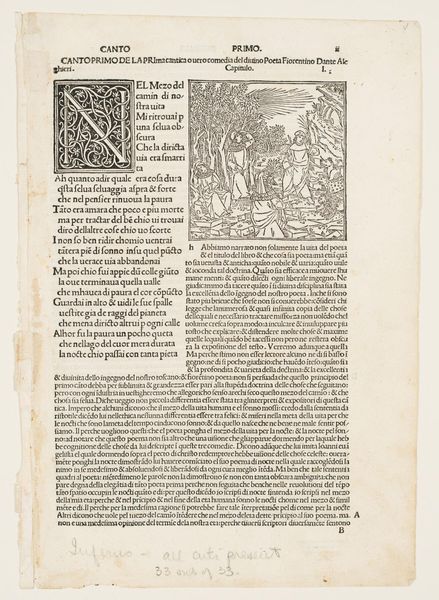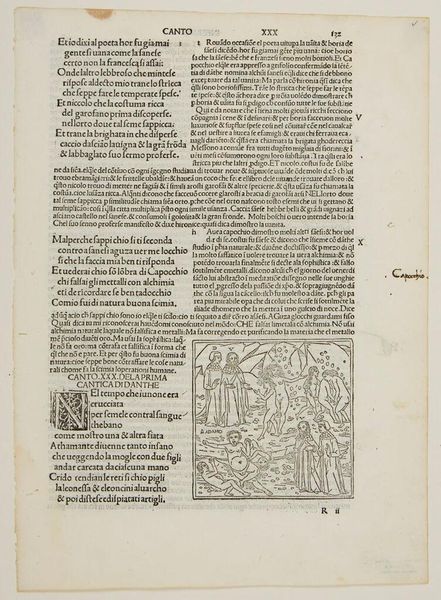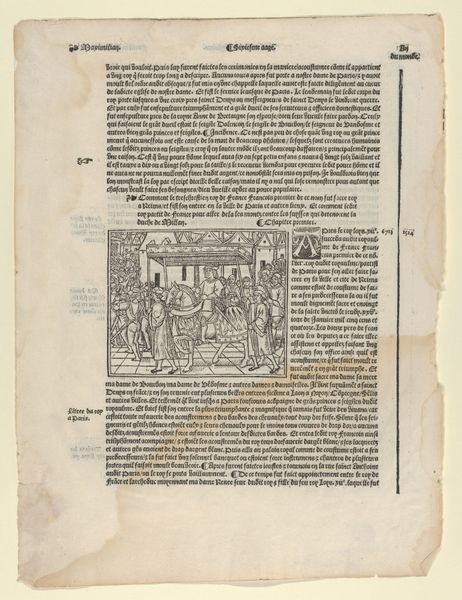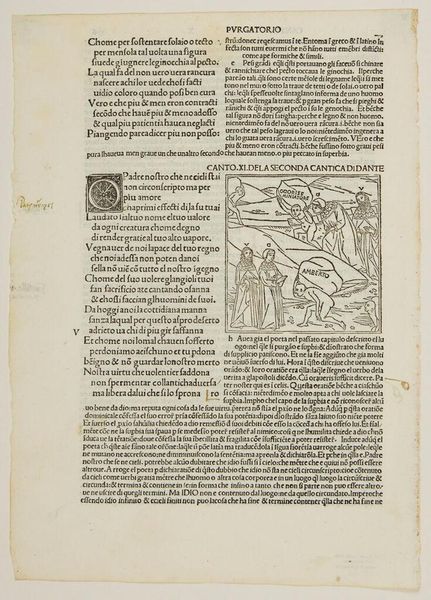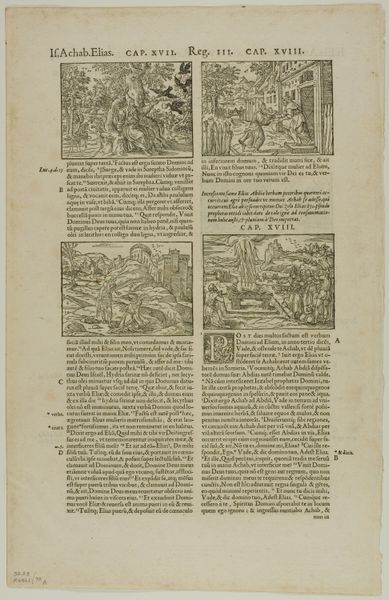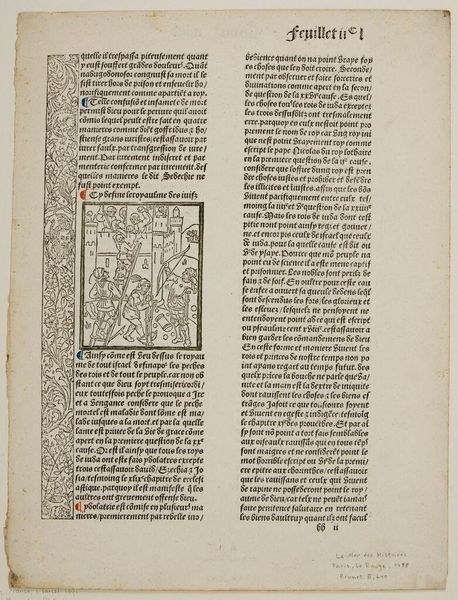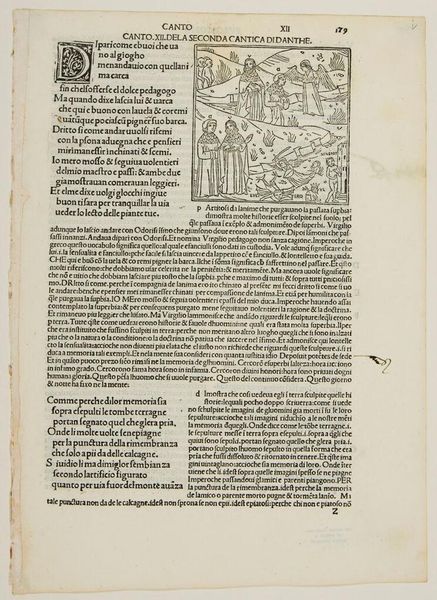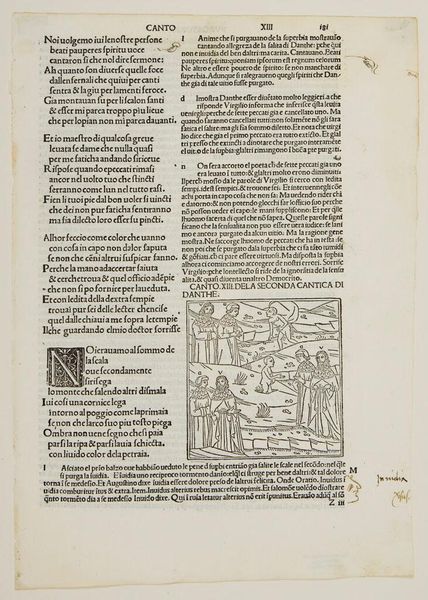
print, paper, engraving
#
medieval
#
narrative-art
# print
#
figuration
#
paper
#
line
#
history-painting
#
engraving
#
watercolor
Dimensions: height 323 mm, width 252 mm
Copyright: Rijks Museum: Open Domain
Curator: Today we're examining an engraving by Cornelis van Noorde, entitled "Val van Lucifer (Satan) en de schepping van Eva," placing it somewhere between 1741 and 1795. It's currently held at the Rijksmuseum. What strikes you first? Editor: The immediate impression is of a tapestry of pale forms, seemingly bleached of colour, creating a dreamlike, almost ethereal quality. There is such contrast with the blackletter gothic text; it makes me think of illuminated manuscripts from the medieval period. The narrative element also leaps out. Curator: The engraving presents a diptych. On the left, we see Lucifer’s fall from grace, depicted as a tumbling mass of figures. To the right is the Creation of Eve from Adam's rib. What connections do you draw between these two scenes? Editor: I see a powerful statement on origins—original sin, original woman. Lucifer's fall and Eve's creation, juxtaposed, speak to inherent rebellion against a divinely ordained order and simultaneously constructs a female body as somehow derivative and subordinate to the masculine one. How complicit is Eve in this historical ordering of patriarchal society? Curator: That's a powerful interpretation. Van Noorde was very much interested in symbolism and its effects upon his audience. The light versus dark motif is quite explicit: Lucifer’s descent into darkness, countered by the light of divine creation. This engraving evokes a certain psychological tension, asking viewers to examine their understanding of temptation, authority, and perhaps free will. How do you read the composition in this way? Editor: Indeed. I find myself focusing on Eve's passivity, especially next to God as active creator. She emerges as a secondary figure, literally and figuratively built from man, further solidifying traditional hierarchies. Also, how do Lucifer's actions of "rebellion" get immediately cast as 'evil'? The engraving presents such dualities as a cautionary tale about those who fail to maintain strict adherence to religious tenets. Curator: These interpretations, and even conflicting viewpoints, reveal something fundamental about the image, and our ongoing dialogue about it. Van Noorde's engraving manages to compress these creation stories into a highly compact format. Editor: Right. This has certainly provided a lens through which to interrogate our own presumptions about religious narratives and the way we interpret them socially, even today.
Comments
No comments
Be the first to comment and join the conversation on the ultimate creative platform.
